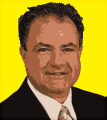Space Science Mentor
A Kentucky professor lets undergraduates take on the big tasks.
Hands-on research is often seen as a good way to engage undergraduates in science and engineering. But at Morehead State University’s ambitious space science center, it’s no mere exercise. As the center joins in preparing suborbital vehicles and a satellite for launch this year, sophomores and even second-semester freshmen are likely to help design and build payloads and to operate ground-to-space communications.
“We’re trying to pull them in earlier and earlier,” says center director Benjamin Malphrus. Besides a retention tool, “it’s a manpower issue.”
Malphrus put his students to the test soon after he arrived in the Appalachian foothills to teach astronomy and planetary science in 1990. With a National Science Foundation grant, Morehead acquired an old Nike-Hercules radar antenna and built a 13-meter radio telescope. “The darned thing worked,” Malphrus says, still sounding nonplused. “The students literally did most of the design.” His undergraduates, he says, make up in work ethic what they lack in preparation.
“The darned thing worked.”
Early success with a radio telescope showed Benjamin Malphrus what his students could design.
Since then, Morehead has expanded its space science program into a multimillion-dollar lab and equipment complex with a key ground-operations role in Kentucky Space. This consortium of universities and public and private organizations partners with the National Aeronautics and Space Administration and has gained a foothold in space-linked economic development.
Meanwhile, undergraduates have worked on “progressively larger systems,” Malphrus says. The leap from studying space to operating space systems began in 2001, when Malphrus spent time with NASA engineers upgrading a satellite-tracking antenna at the Wallops Flight Facility near Chincoteague, Va. With such an antenna, Morehead could “revolutionize the science curriculum,” then-President Ronald G. Eaglin believed. The school explored buying and moving the 60-foot-wide behemoth but instead erected its own, even bigger, satellite-tracking antenna. Later this year, Morehead will open a new $15.6 million space science building with a 108-seat domed “Star Theater,” a noise- and vibration-free anechoic chamber, and an antenna control room.
The ascent hasn’t been mishap-free. In 2007, Kentucky Space developed a suborbital rocket payload – instruments to test communications systems and measure acceleration and temperature. Malphrus and a group of students stood by at the White Sands, N.M., launch site. The payload functioned well, but the commercially obtained rocket failed in the second stage. The students were chagrined. “It was a long plane ride back,” Malphrus recalls.
In coming months, “we’re going to have to scramble a bit,” Malphrus says. Kentucky Space will attempt two suborbital launches, several edge-of-space balloon missions — one to collect comet dust — and launch its first orbital satellite mission, KySat-1. Based on a design pioneered by Stanford University’s Robert Twiggs, the 10-centimer, cube-shaped and solar-powered satellite will test unproven hardware and provide educational tools for school-age and college students. Morehead will serve as a ground-control station to track and guide the satellite and pull in quantities of data. Already, students are deep into pre-mission tests, hoisting the satellite above a cherry picker — a “satellite on a stick,” Malphrus calls it — to see how it communicates with the antenna.
“It’s all student-led,” says Jason Smathers, a graduating physics major in charge of KySat-1 communications and antenna systems. “Students make the decisions,” he says, then check with Malphrus when in doubt. “As a mentor, he’s excellent.”
Malphrus himself is not an engineer — his doctorate is in physics and astronomy education — and doesn’t claim to produce professional aerospace engineers. Instead, Morehead’s space science degree, begun in 2006, which blends physics, astrophysics, satellite telecommunications, electrical engineering, mathematics, and computer sciences, makes for “pretty high-level technicians,” he says. Yet some students go further. Smathers is contemplating graduate school. Morehead alum Randy Lillard went on for a master’s at Georgia Institute of Technology and became a NASA aerospace engineer. And of the first two space-science degree holders, one is pursuing a master’s in aerospace at Cornell and the other a Ph.D. in planetary science at the University of Tennessee. Clearly, they left inspired.
Mark Matthews is the managing editor of Prism.
Category: Up Close
